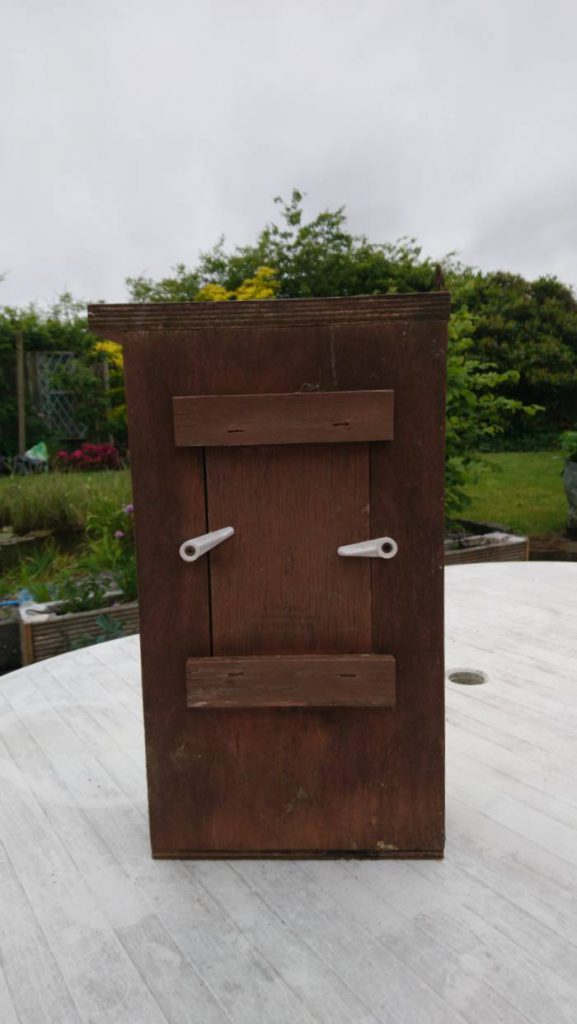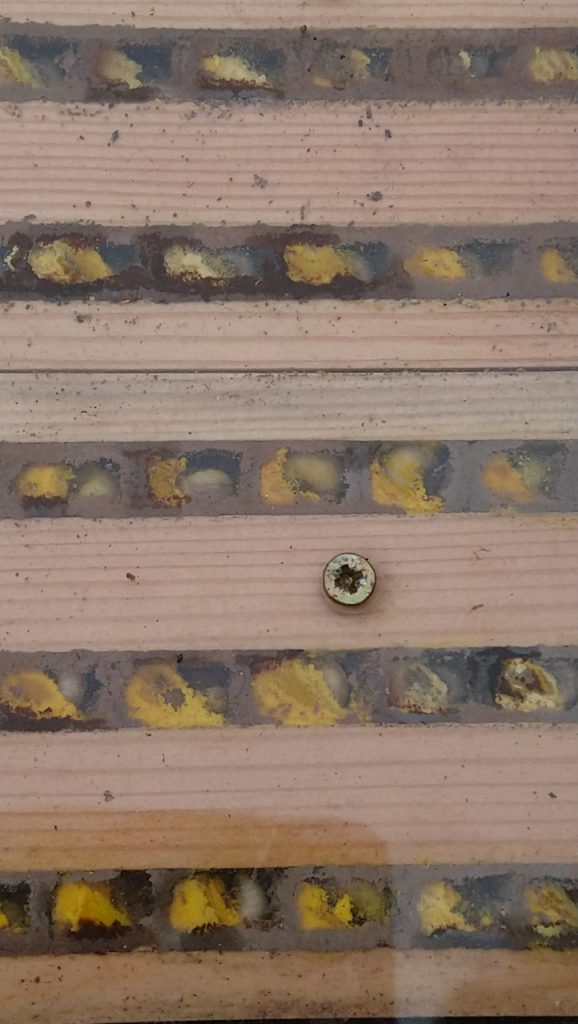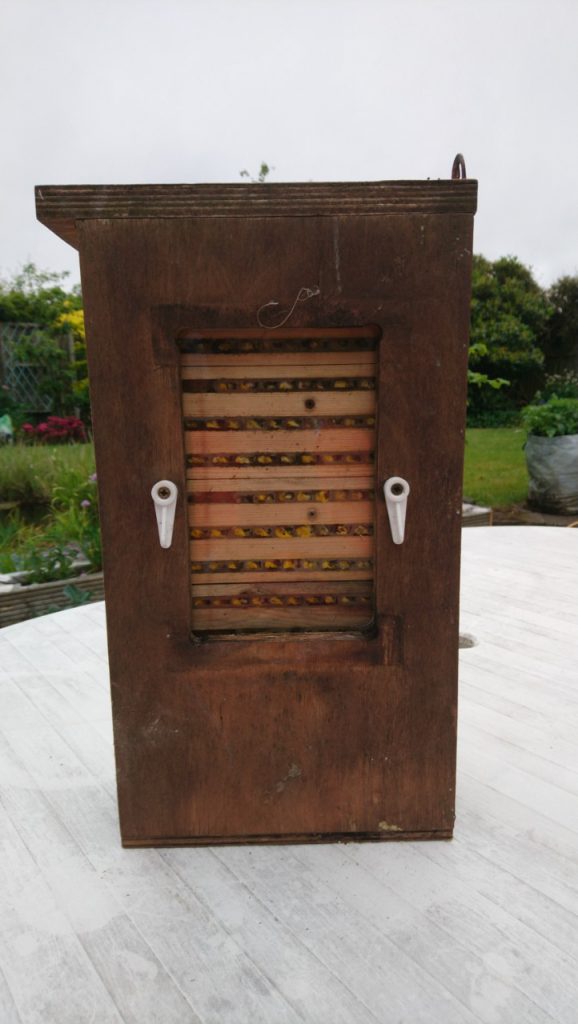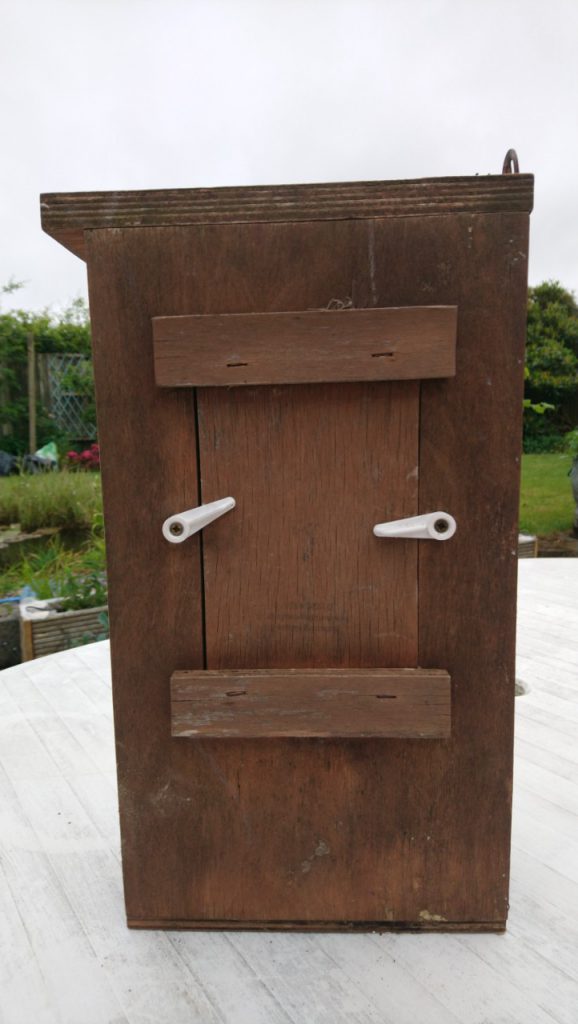At the National Museum of Rural Life, we have your typical honeybee hives, but we also look after solitary bees! The solitary bee box was put up in 2018. We were prompted to buy the box when a visitor, on seeing our honeybee hives, asked what we were doing to help the other bees. Our box is attached to a wooden post near a good source of wildflowers and hedgerows.

There are around 200 species of solitary bees in the UK! They are very important pollinators and make a huge contribution to our environment. The bees nesting in our box are Mason bees, so called because they use mud to make their cells. As Mason bees don’t have pollen baskets on their legs like honeybees, when they fly from flower to flower they deposit a lot of pollen as well as collect it. This means that one Mason bee is equivalent to 120 honeybees in the pollination it provides.
The box is made up of a series of channels; the female enters a channel and lays an egg and deposits a packet of pollen for the hatched grub to feed on. She then seals the cell with mud. This continues until the channel is full. The bee chooses the sex when she lays the egg. For a female bee, the egg is fertilized, for a male it is unfertilized. As the males hatch first, she lays the female eggs first at the back of the channel. The males are laid last to be nearer the entrance/exit. The eggs are laid in the Spring/early Summer. The grubs feed on the pollen supply in the cell and in the Autumn they spin a cocoon and eventually emerge from the cells as fully formed bees the following Spring. We have quite a few grubs already!

The first year the box was put out we had 15 cocoons at the end of the season. All 15 hatched in the following spring! In 2019 we had 280 and all but 3 hatched. We know this because we collect the cocoons and overwinter them in the museum. This gives them the best chance of survival. Due to way the eggs are laid, if a bee dies in a cell, it can stop the bees behind it emerging. The bee box we use has been designed to come apart. The cocoons can then be removed from the channels by carefully running a blunt screwdriver along the bottom of the channel. This dislodges the cocoons without damaging them. They are then stored between layers of very slightly damp Vermiculite in a lidded plastic box. Small holes are punched in the lid. The box is kept in a cold area in the museum until the spring when the weather starts getting warmer.
The cocoons are put out into a hatching chamber in the bee box where they can hatch unimpeded. The males will feed then fly around the box awaiting the hatching of the females. Then the whole cycle starts again!
You can find out more about bees and how to encourage wild ones into your garden on the Bumblebee Conservation Trust’s website or through the WWF.

